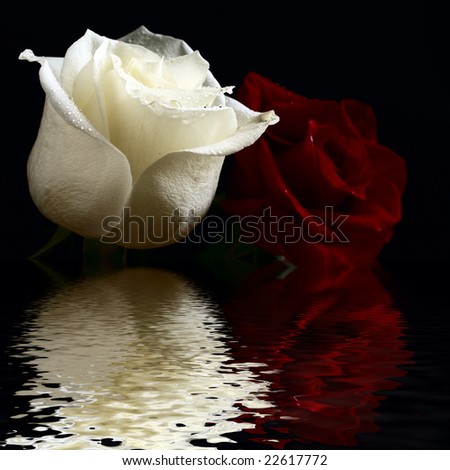The flowers are renowned for their fine fragrance, and are commercially harvested for rose oil (either "rose otto" or "rose absolute") used in perfumery and to make rose water and "rose concrete". The flower petals are also sometimes used directly to flavor food or to make tea and are considered safe for human consumption.
A still popular example of R. × damascena is the Ispahan rose. The hybrid Rosa × centifolia is derived in part from Rosa × damascena, as are the Bourbon, Portland and Hybrid Perpetual classes.
The cultivar known as Rosa gallica forma trigintipetala or Rosa damascena 'Trigintipetala' is considered to be a synonym of Rosa × damascena.
Rosa × damascena is a cultivated flower, no longer found growing wild, and the history of just where it came from is varied, but generally understood as coming from the Middle East.
The Crusader Robert de Brie is sometimes given credit for bringing the Damask rose from Syria to Europe sometime between 1254 and 1276. The name refers to Damascus, Syria a major city in the Middle Eastern region. Other stories say the Romans brought the rose to England, and a third account says that the physician of Henry VIII gave him a Damask rose, as a present, around 1540.
There is a history of fragrance production in Afghanistan (Kabul Province) from the Damask rose. An attempt has been made to restore this industry as an alternative for farmers who currently produce opium.
Rosa × damascena is best cultivated in hedge rows to help protect the blooms from wind and to facilitate ease of picking. Gathering the flowers is quite labor intensive as it must be done by hand. There are about twenty to forty days per year when harvesting occurs, depending on the type of Rosa × damascena cultivated in the region. The roses are gathered by hand and brought to a central location for steam distillation. Photos showing production methods can be seen here. The largest producers of rose oil from the different names all falling under the name Rosa × damascena are Bulgaria and Turkey. France and India also contribute significantly to the world market. Morocco, Tunisia and some other Persian and Middle Eastern countries have historically produced rose oil, but their modern contribution is minimal. The town of Kazanlak Bulgaria was founded in 1420. It is assumed by most historians that the cultivation of the Kazanlak Rose began around that period. Rosa × damascena, known in this region as the Kazanlak Rose, were reportedly brought to the area by a Turkish judge who brought them from Tunisia and cultivated them in his own fragrant garden, and is now cultivated for commercial use in an area surrounding Kazanluk called the "Valley of Roses." The distillate from these roses is sold as 'Bulgarian Rose Oil", and "Bulgarian Rose Otto". Follow this link to read more about the yearly Rose Festival in Bulgaria in honor of the rose.
A still popular example of R. × damascena is the Ispahan rose. The hybrid Rosa × centifolia is derived in part from Rosa × damascena, as are the Bourbon, Portland and Hybrid Perpetual classes.
The cultivar known as Rosa gallica forma trigintipetala or Rosa damascena 'Trigintipetala' is considered to be a synonym of Rosa × damascena.
 flower - Water and Roses |  stock photo : Roses in water |  colored roses in water |  Pink Roses In Water Twinkling |  drop flooding in water |
 red roses in water-filled |  Five Colorful Roses Rising |  Three roses with water drops |  Pink Roses in Water |  Sparkling Pink Roses \x26amp; Water |
There is a history of fragrance production in Afghanistan (Kabul Province) from the Damask rose. An attempt has been made to restore this industry as an alternative for farmers who currently produce opium.
 and white roses in water |  roses reflection in water. |  Roses In Water 002 |  Rose water - flowers, Roses |  roses reflection in water. |
 roses floating in water. |  Five Colorful Roses Rising |  The Happy Roses are placed in |  Pink rose in water no15880 | .jpg) Beautiful Snow Roses |

No comments:
Post a Comment